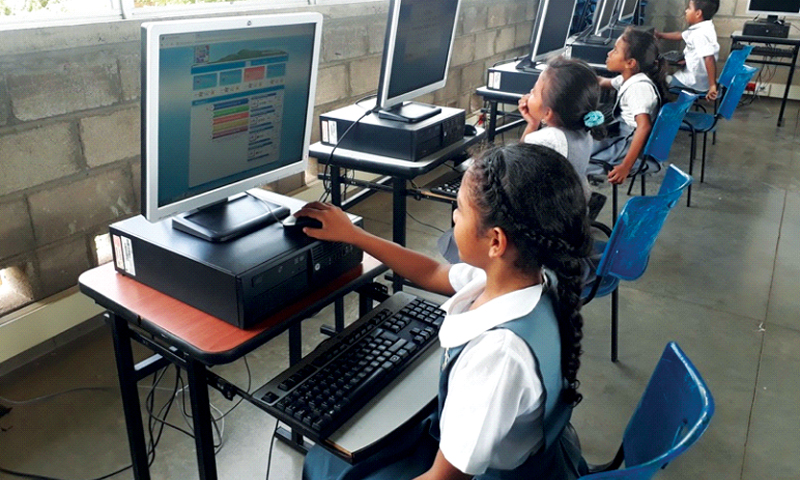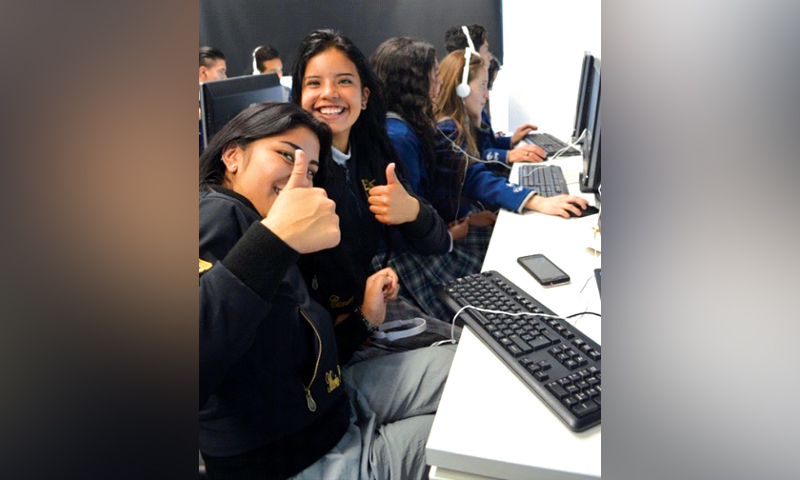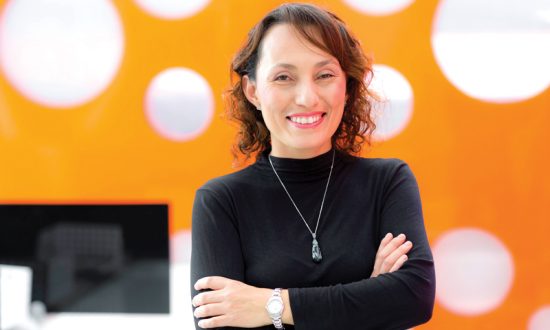With more than 20 years of professional experience in structuring and developing academic and corporate projects, with special emphasis on entrepreneurship and business skills development for women, Martha has a solid experience in the design, creation and management of educational public policy projects, based on adaptive learning with the use of artificial intelligence and machine learning for populations in vulnerable conditions. Expert in Design Thinking and Instructional Design (Certified by the IDB). A serial entrepreneur, she serves as HundrED Ambassador for Colombia, a finnish global community that brings positive change to K-12 education and identifies innovations to helping them spread. Economist and MBA from the National University of Colombia, Master in Innovation from the Autonomous University of Barcelona.
Colombia has achieved significant progress in terms of reducing the gender gap when compared to its neighbors in Latin America, holding the thirteenth place among 180 countries worldwide, according to the OECD’s latest report on gender equality (2020). However, this effort is found to be too small if we consider that, according to the figures of the International Monetary Fund it will take us 59 years in Latin America, and 100 at a global scale, to close these gaps. Many organizations worldwide recognize the direct relation between quality education and improvements in family living conditions, gender role conceptualization and healthy cohabitation as individuals in general. Nevertheless, when we place ourselves in high vulnerability urban or rural areas anywhere in Latin America, this assertion does not appear to be all that evident.
Furthermore, if we examine educational institutions in our countries a little closely, it becomes apparent that while having children and youths attending school with the purpose of learning should be the rule, it is actually the exception. Working on the basis of the importance of quality education in reducing gender gaps, it is certain that the educational system plays a fundamental role in building better social environments for girls and female adolescents. Unfortunately, our educational systems are subject to constant criticism on account of their poor response capacity to changes in global trends, curricular structures tied to old paradigms and an outdated way of developing learning, and as a social reflection, through the socalled “hidden curricula”, they promote a space that preserves and reproduces inequalities bound to gender stereotypes, inequitable distribution of paid and unpaid work, and even decisions on remaining in the classroom and access to higher education for women. This is not a minor problem at a social and economic level if we take into consideration that according to the ECLAC (2016), 55% of homes include the presence of girls and female teenagers, and thus tending to their needs affects the majority of the population. Additionally, the significance of this issue is evident in light of the opportunity this sector of the population represents as an engine for growth: According to the McKinsey Global Institute: “If women had the same participation as men in the economy, the potential boost in Latin America could be US $ 2.6 trillion, or 34% of annual regional GDP”.

A not inconsiderable figure if we consider the current crisis in our economies exacerbated thanks to Covid-19, which in the words of the outgoing IDB president, Luis Alberto Moreno, puts Latin America at the gates of another lost decade in terms of economic growth and social welfare. The Covid-19 situation has also brought a significant setback on all fronts in terms of gender equality, as indicated by countless reports from the UN, UNESCO, and various regional government bodies: “the crisis has affected girls the most”, because by staying at home they are exposed to situations of abuse or because they are simply relegated to housework. The most dramatic aspect of this situation is that premature pregnancies have increased and, in some countries, so have forced marriages.”
Most of these girls will not return to the educational system, and their lives will change forever”, and the decision is not theirs, taking into account that for 48% of Latin American youth, the migration to virtual education imposed by the Covid-19 crisis is simply not possible, due to the lack of a computer or internet connection in their homes. This reality confronts our response capacity, and this is when we must be more creative with solutions: We cannot, as a region, limit ourselves to mere criticism of the educational model and the crisis in our society, we must concentrate efforts and promote actions that yield good results. It is time to take advantage of emerging educational methods such as adaptive learning and personalization, problem and challenge-based learning, and the use of the convergence between technology and education as a tool for enhancing learning and experiences for closing gaps.
Like any crisis, the current one is also a moment of rebirth of planetary consciousness, where it is imperative to take advantage of the impulse of the new generations less motivated by economic profit, and more by the solution of their real problems: Young people genuinely care about issues like depression, suicide, protecting the environment, among many others. It is the only historical moment where there is a real social incentive for more women to start leading, and this will increase support for social impact companies that focus on women’s empowerment and gender equality. Never before have we had in Latin America so many and such varied programs to support the education of girls and young women. The digital revolution also favors us, bringing an unprecedented rise of organizations and initiatives in favor of better education on key issues such as reproductive health, prevention of gender-based violence, literacy, fostering steam vocations and digital citizenship.
There is still uncertainty about how far this new generation known as “Z” will be able to take the world; what is clear is that it is a generation committed to social causes and seeking authentic experiences only with causes that align with their interests. And it is there where the programs oriented to educate in gender equity acquire all the relevance and will maximize their effect. We cannot ignore the enormous possibilities for change that these new generations of girls and young women bring, with the new paradigms of being the first generations incubated in the 4.0 revolution, accustomed to information overload, to greater freedom to express their opinions in social networks and with fewer limiting beliefs. In contrast, we must also recognize their lower attention span, which means that for any educational process, we have greater possibilities of arriving with unconventional educational tools and with the wonderful challenge, for all those who develop programs, of motivating them through channels and more complex interactions.

Additionally, today we have more and better measurement instruments, we can carry out simulations at the government level on issues that were not previously questioned, such as domestic work and unpaid care at the home and community level, which allows us to make visible and describe a closer panorama to the reality of our young people, and that allows us to improve the channels for support and attention. For us, the key to change is flexible education: education has new access routes as opposed to traditional ones. Artificial intelligence, on the one hand, helps us with personalized widespread growth and even when we have infrastructure problems, it is possible to bring programs of this type to young people through schools. If we can take advantage of the potential of these new technologies to break down beliefs entrenched in microsexism (for example, in that certain tasks are meant for girls or that there are areas of knowledge inaccessible for a particular gender), strengthen positive masculinities and empower girls; In combination with collaborative and face-to-face methodologies, we will achieve significant progress in terms of gender education and its dissemination to traditionally unreachable sectors.
In this sense, it is necessary to highlight the role that the increasingly numerous edtech startups have been fulfilling as an agent of support for state policies on education for equity: spreading messages, generating learning and enhancing the capacities of girls and young people oriented to encourage steam areas and the development of digital entrepreneurial vocations among girls and young people; with the firm objective of developing a critical mass of young women who are capable of multiplying the efforts of public policy initiatives. Although we are far from reaching the goal, we must see the crisis as an opportunity to redouble our efforts and reduce the persistent inequality in our region, understanding that girls and women in our countries have much to contribute in any post-pandemic scenario.




